Do you revel in the thought of an energetic, loyal companion by your side on outdoor adventures? Have you been considering adding an Australian Shepherd to your family? With their intelligence, work ethic, and affection, Aussies make lovely pets for active households. However, their distinctive traits also come with specific care and training requirements.
As a fellow outdoor explorer with years of experience decoding canine insights, I’m here to act as your friendly trail guide on the intricacies of Aussie ownership. Consider these 12 unbreakable rules your orienteering map to harmony with your furry best friend!
Table of Contents
- 1 Why Guidelines Matter in Aussie Ownership
- 2 An Ounce of Prevention: The Benefits of a Disciplined Approach
- 3 12 Fundamental Rules for Aussie Owners
- 3.1 Rule 1: Make Exercise a High Priority
- 3.2 Rule 2: Start Training Early and Stay Consistent
- 3.3 Rule 3: Prioritize Socialization
- 3.4 Rule 4: Schedule Regular Grooming
- 3.5 Rule 5: Feed a Balanced, Nutritious Diet
- 3.6 Rule 6: Arrange Regular Veterinary Visits
- 3.7 Rule 7: Stimulate Their Sharp Mind
- 3.8 Rule 8: Lean Into Their Herding Instincts
- 3.9 Rule 9: Design a Dog-Friendly Home
- 3.10 Rule 10: Arm Yourself With Patience
- 3.11 Rule 11: Plug Into an Aussie Community
- 3.12 Rule 12: Commit to Continual Learning
- 4 Final Thoughts: Embrace the Possibilities!
- 5 Frequently Asked Questions About Aussies
- 5.1 How much exercise does an Australian Shepherd need daily?
- 5.2 What health issues are common among Australian Shepherds?
- 5.3 Are Australian Shepherds easy to train?
- 5.4 How often should you groom an Australian Shepherd?
- 5.5 What’s the best way to socialize an Australian Shepherd puppy?
- 5.6 At what age do Australian Shepherds calm down?
- 6 Related posts:
- 7 Australian Shepherd Colors: Exploring the Vibrant Spectrum
- 8 10 Australian Shepherd Life Hacks: Save Time & Stress
- 9 Australian Shepherd Dogs
- 10 Australian Shepherd Puppies (25 Cute and Cuddly Pups)
Why Guidelines Matter in Aussie Ownership
Australian Shepherds are renowned for captivating hearts with agility, loyalty, and enthusiasm. Initially bred as herding dogs, this legacy endows them with boundless energy and a capacity for intense physical activity.
However, without understanding critical guidelines, the distinctive traits that make Aussies wonderful pets can also pose challenges. Their energy and herding instincts need constructive outlets to prevent behavioral issues like nuisance barking, furniture chewing, or nipping at heels. Proper socialization, training, exercise, and mental stimulation are equally vital.

That’s why specialized guidelines provide a roadmap to meet an Aussie’s needs for a happy human-animal partnership. They cover critical responsibilities across all life stages, fostering trust and respect through clear expectations. Embracing these guidelines paves the pathway to harmony.
An Ounce of Prevention: The Benefits of a Disciplined Approach
Implementing a disciplined approach may sound rigid, but structure and consistency set the stage for positive outcomes in Aussie ownership. Preventative measures curb destructive behaviors before they start, reduce anxiety, and build an unbreakable bond.
Improved Obedience
Clear guidelines and training equip your Aussie with good manners, making them a joy to be around. Instead of jumping on guests, they’ll learn to wait patiently for attention.
Fewer Anxiety Triggers
Consistency provides comfort. When an Aussie knows what to expect, they feel secure and worries melt away.
Deeper Human-Animal Bond
Spending time actively training your Aussie tightens your relationship, forging a profound connection built on communication and trust.
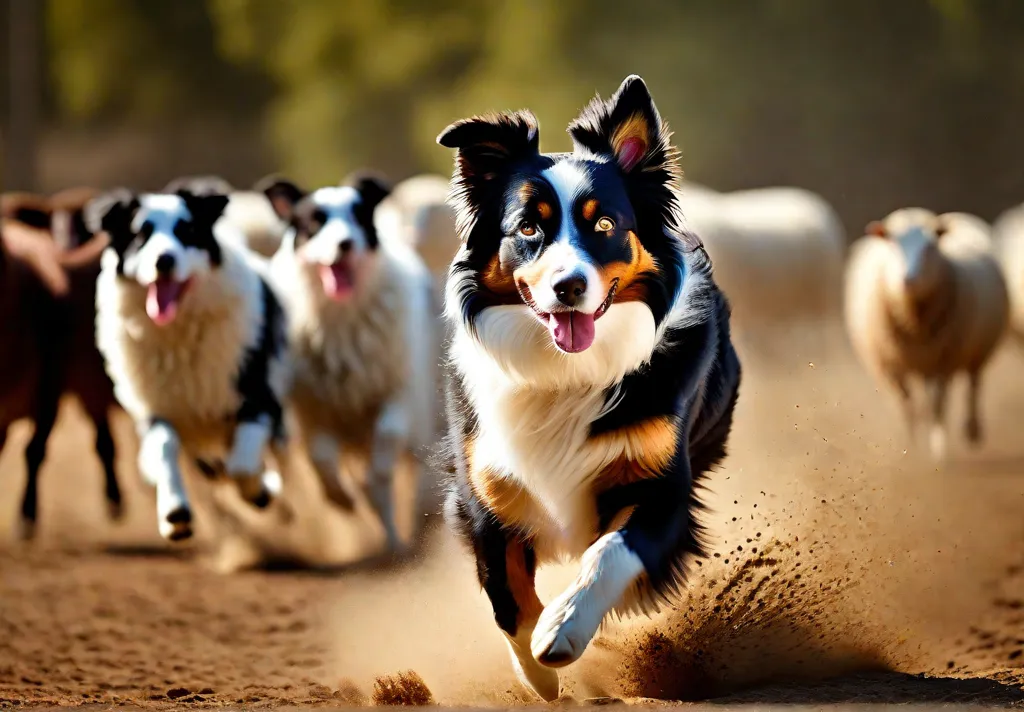
Enhanced Quality of Life
Providing the nutrition, exercise, and veterinary care an Aussie thrives on means a healthier, happier life for your four-legged friend.
12 Fundamental Rules for Aussie Owners
Let’s explore the 12 unbreakable rules that cement the human-Aussie bond while avoiding common pitfalls. Consider each one an essential checkpoint on your path to harmony.
Rule 1: Make Exercise a High Priority
Originally bred as herding dogs, Australian Shepherds have an exceptional capacity for exercise. Their high energy makes daily activity a prerequisite for excellent behavior and good health.
What happens without adequate exercise? Aussies may develop anxiety or destructive tendencies like excessive barking and chewing. Obesity and related diseases also loom as risks.
Tips to Meet Your Aussie’s Exercise Needs
- Schedule at least 60 minutes of vigorous exercise daily. Activities like running and hiking are ideal.
- Incorporate variety with games of fetch, walks around new neighborhoods, and trips to the dog park.
- Try agility training classes to combine physical activity with mental challenges.
- Pay attention to signs of boredom like pacing or toy tossing; your Aussie signal for more exercise.
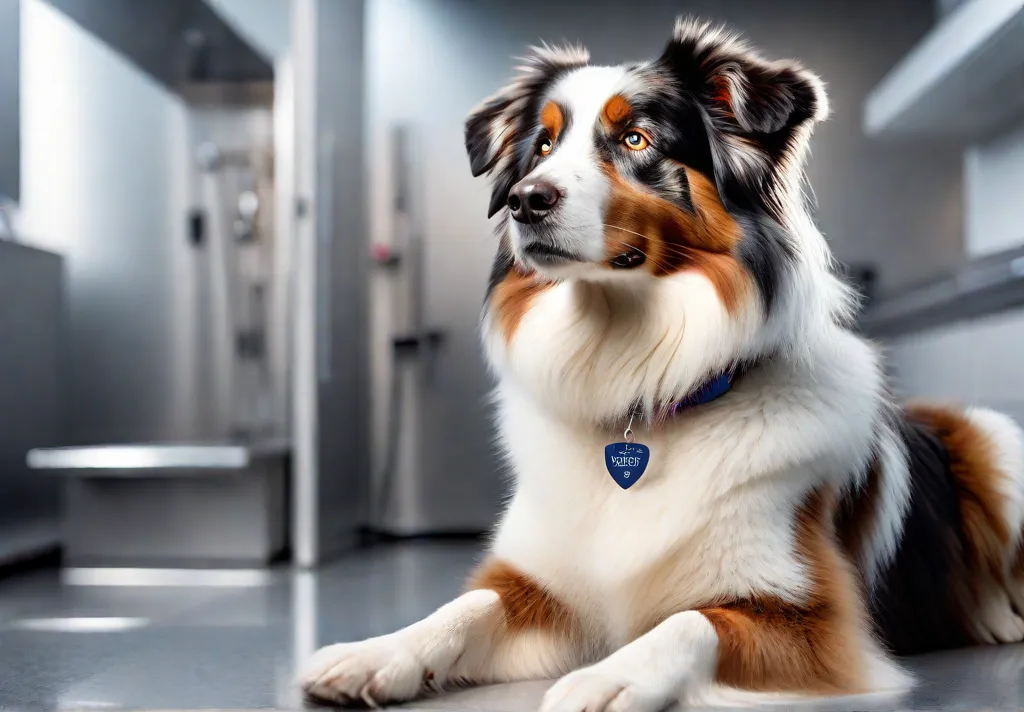
Making exercise a high priority keeps your Aussie healthy in body and mind. Best of all, you get to adventure together!
Rule 2: Start Training Early and Stay Consistent
Australian Shepherds are incredibly intelligent, meaning training is essential for channeling their mental and physical energy into good behavior. According to the American Kennel Club, starting early and maintaining consistency is crucial to success.
Aim to begin basic training around 8-12 weeks old. Short, engaging sessions will make the most significant impact. While Australian Shepherds do well with positive reinforcement training involving treats and praise, be warned that using punishment risks eroding trust.
Mastering these fundamental commands paves the way for a well-mannered companion:
- Sit – Foundational for impulse control
- Stay – Prevents door dashing or pestering guests
- Come – Ensures reliable recall if your Aussie escapes
- Heel – Allows peaceful walks without pulling
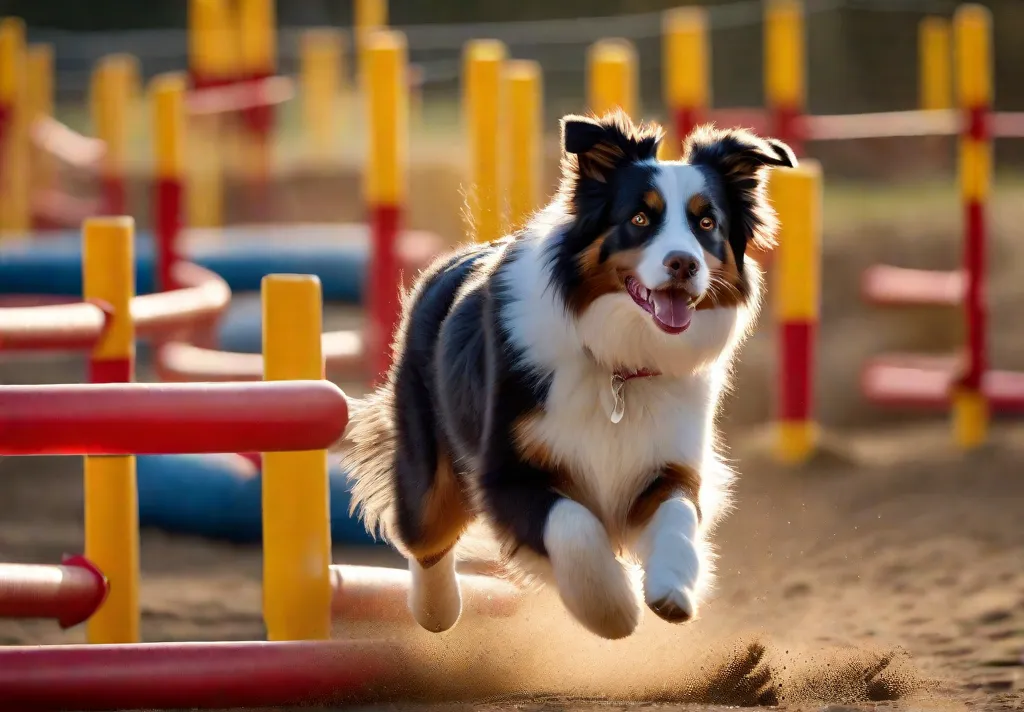
Patience and consistency in training must be emphasized. Be your Aussie’s benevolent leader, celebrating small wins until good manners become second nature.
Rule 3: Prioritize Socialization
Socialization may sound like fun and games, but it’s serious business in cultivating a friendly, confident Australian Shepherd. Controlled exposure to new places, people, and animals prevents fearfulness or aggression.
According to the American Kennel Club, the first 12 weeks of life represent the most critical socialization window. Use this timeframe wisely by gradually introducing your Aussie to the world in positive contexts. Enroll them in puppy kindergarten classes filled with new sights, sounds, and smells alongside playmates. Dog parks and pet store visits also expand their horizons.
Please pay attention to signs of discomfort like lip licking or tail tucking so you can remove them from stressful situations. With time and patience, socialization builds the resilience of your Aussie to handle life’s surprises.
Rule 4: Schedule Regular Grooming
The Australian Shepherd’s signature lush double coat requires regular upkeep to prevent matting and tangling. Aim to brush their fur twice weekly to distribute oils for a healthy shine.

Bathing every 4 to 6 weeks using dog-friendly shampoo keeps their coat fresh and clean. Don’t forget to trim your nails, clean your ears, and brush your teeth too regularly. A consistent grooming routine keeps your Aussie looking sharp while reinforcing your bond.
If you don’t keep up with grooming, your Aussie’s risk for skin infections and parasites increases. Matted fur can even cause painful sores. Regular grooming lets your dog stay happy and healthy while looking picture-perfect.
Rule 5: Feed a Balanced, Nutritious Diet
Diet plays a monumental role in an Australian Shepherd’s health and well-being. Like humans, Aussies need balanced nutrition tailored to their age, size, and activity level. This includes high-quality proteins for muscle growth, healthy fats for digestion, and complex carbs for sustained energy.
It’s also essential to know what NOT to feed your Aussie. Human food often contains excess fat, salt, and spices that can cause stomach upset. Skip the table scraps and stick to kibble explicitly formulated for dogs. It was feeding irregularly or letting their water bowl go dry risks disrupting digestion or causing dehydration, too.

Consult your veterinarian to develop the optimal nutrition plan based on your dog’s needs. Proper feeding sets the stage for a long, vigorous life together.
Rule 6: Arrange Regular Veterinary Visits
From heartworm risk assessments to diagnostic lab work, preventative veterinary care is invaluable for monitoring your Aussie’s health, especially as they age. Annual check-ups and vaccinations reduce the likelihood of disease and costly emergency visits down the road.
Hip and elbow X-rays help diagnose early signs of dysplasia, a common inherited condition causing arthritis. Eye exams check for issues like cataracts and eyelid abnormalities. Your vet may recommend additional screenings as well.
While annual visits cover the basics, don’t hesitate to call your vet if you notice vomiting, limping, or other troubling symptoms in between. Catching problems early makes treatment more accessible. Investing in your Aussie’s preventative healthcare pays dividends through more years of companionship.
Rule 7: Stimulate Their Sharp Mind
Behind their dashing good looks, Australian Shepherds have formidable intelligence inherited from their history as adept livestock herders. Intelligent and energetic, they thrive when given regular mental workouts.
Luckily, it’s easy to engage your Aussie’s mind:
- Hide treats around the house and encourage them to sniff them out
- Fill puzzle toys with kibble to mimic foraging
- Practice new commands or tricks daily
- Play hide and seek by ducking behind furniture while they search
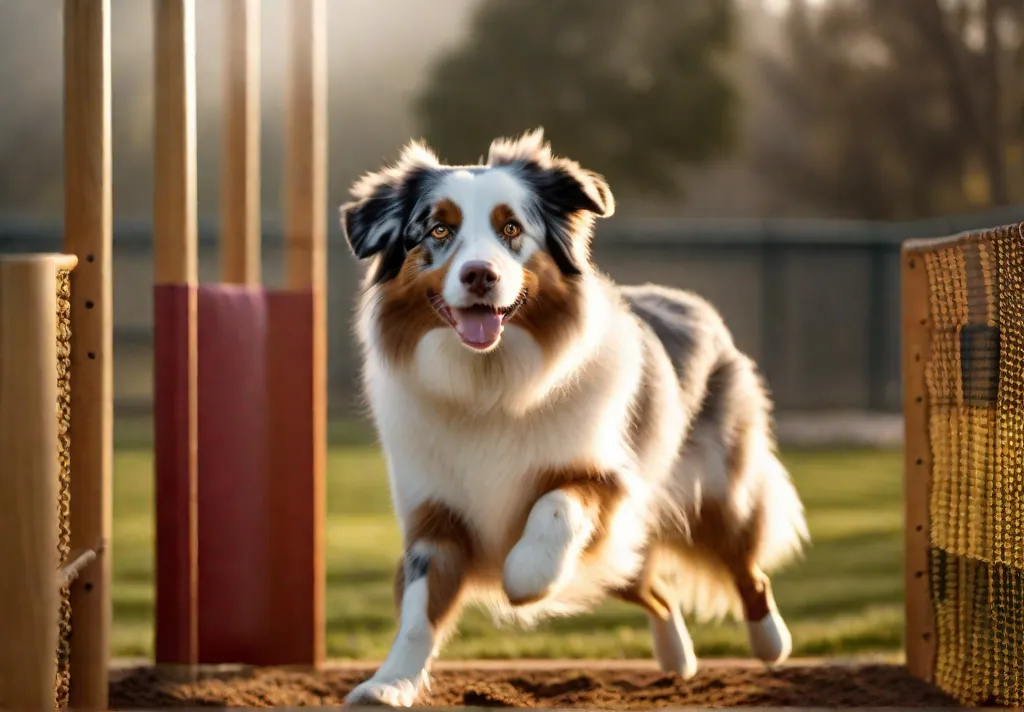
If your Aussie grows bored without adequate mental stimulation, they are prone to destructive behaviors like furniture chewing or nuisance barking. Providing a steady diet of brain games and challenges prevents boredom while delighting your dog.
Rule 8: Lean Into Their Herding Instincts
As descendants of herding dogs, Australian Shepherds still exhibit strong instincts to nip, stalk, and chase anything that moves – including people and other pets! Without proper outlets, these profoundly ingrained behaviors can become problematic.
Luckily, many activities provide healthy avenues for your Aussie to demonstrate their herding talents:
- Herding trials – Competitions where Aussies maneuver livestock through courses
- Agility – Guiding your dog as they tackle obstacle courses
- Flyball – Having your Aussie retrieve balls from a unique launcher
While some nipping or circling during play is normal, discourage biting people. With training and appropriate outlets, your Aussie’s innate skills shine through.
Rule 9: Design a Dog-Friendly Home
As active dogs that bond deeply with their families, Australian Shepherds relish cozying up on the couch and trailing their owners around the house. Ensuring your home’s safety and comfort makes the environment more harmonious.
Start by containing hazards. Regularly scan for loose electrical cords, poisonous houseplants, or choking hazards. Secure open gates or fence boards in your yard to prevent escape artists.
You can also enrich your home’s dog-friendliness through:
- Dog beds in high-traffic areas for napping
- A crate for peaceful alone time
- Interactive feeders and puzzle toys
- Gates to keep your Aussie out of off-limit areas
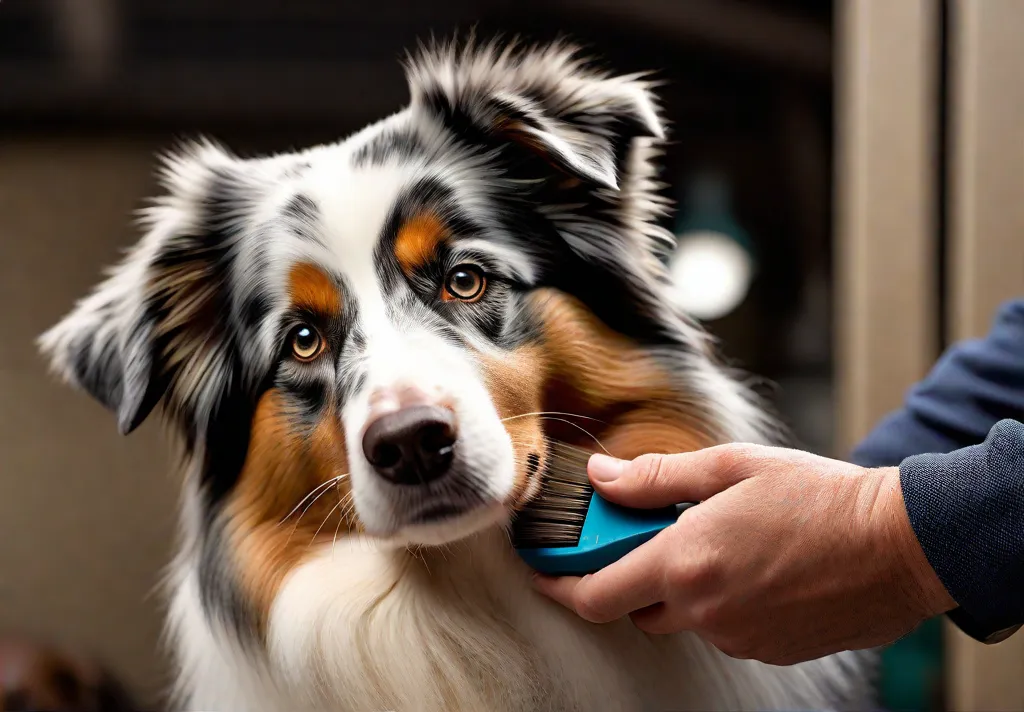
These creature comforts give your four-legged friend a sense of security while protecting your belongings.
Rule 10: Arm Yourself With Patience
Australian Shepherds are a brilliant breed but with a strong, stubborn streak. Training is often an exercise in patience and persistence. However, the payoff of good manners and devoted companionship makes the effort worthwhile.
Rather than growing frustrated, celebrate small victories like mastering a new trick. Your Aussie wants to please you, but occasional backsliding is normal. Stick to predictable routines so your expectations remain clear.
If undesirable behaviors crop up, avoid scolding. Instead, reinforce alternatives through positive reinforcement until good habits take hold. Progress may seem glacial initially, but consistency and understanding keep you on the path to harmony.
Rule 11: Plug Into an Aussie Community
Australian Shepherd ownership has unique joys and challenges that are best understood by others who share your experience. Seek out other Aussie enthusiasts online or locally.
Connect with breeders, trainers, and owners through groups like the Australian Shepherd Club of America. Swap stories about your dog’s quirks. Ask for advice about health or training hurdles. Share your hard-earned wisdom to guide others in return.
Finding community support helps you celebrate the soaring highs and overcome the frustrating lows of Aussie ownership. It also creates opportunities for your dog to socialize and burn energy with new friends!
Rule 12: Commit to Continual Learning
Whether you’re a first-time or experienced dog owner, there is always more to learn about caring for your Australian Shepherd. From nutrition research to training techniques, be open to gathering new information.

Stay up to date by:
- Reading breed-specific books and publications
- Attending dog training seminars
- Consulting with veterinary specialists
- Researching pet care best practices online
Continuing education allows you to provide the best care as your Aussie’s needs evolve. It also helps you identify emerging health issues when they are most treatable. Remember, you and your dog are on this journey together for the next decade or longer!
Final Thoughts: Embrace the Possibilities!
Welcome the responsibilities of Australian Shepherd ownership as a journey of companionship. When provided with understanding leadership, clear boundaries, and devoted care, Aussies blossom into loyal partners, making every outdoor adventure more magical.
The trail will undoubtedly have challenges, but the joyful bond shared with an Aussie makes each one worthwhile. If questions or concerns arise, lean on your veterinarian and fellow Aussie owners.

Most importantly, lead your dog with patience, empathy, and love. By embracing the possibilities, you’ll discover the profound gifts of harmony. Now grab the leash; your adventure awaits!
Frequently Asked Questions About Aussies
How much exercise does an Australian Shepherd need daily?
Aussies are highly active dogs requiring at least 60 minutes of vigorous daily exercise, such as running, hiking, agility training, or playing fetch. Without adequate activity, they are prone to developing problem behaviors.
What health issues are common among Australian Shepherds?
Hip and elbow dysplasia are, unfortunately, prevalent inherited conditions causing arthritis. Eye problems, hypothyroidism, and epilepsy also appear more frequently in the breed. Annual vet exams help diagnose issues early.
Are Australian Shepherds easy to train?
Aussies are highly intelligent and eager to please, making them trainable dogs. However, their strong-willed nature requires firm, consistent leadership using positive reinforcement like treats and praise. Punishment risks compromising trust during training.
How often should you groom an Australian Shepherd?
With their thick double coats prone to tangles and mats, aim to brush your Aussie at least twice per week thoroughly. Bathing every 4-6 weeks and regular nail trims keep their coat, skin, and paws healthy.
Enroll your Aussie in puppy kindergarten classes by 12 weeks old for safe, structured socialization with new sights, sounds, people, and other puppies. Continue exposing them to diverse environments and animals as they mature.
At what age do Australian Shepherds calm down?
Aussies are energetic dogs that take 1-2 years to calm down from the puppy stage. However, with adequate exercise and training, they transition to more manageable adults around age 2, even as their lively spirit persists.